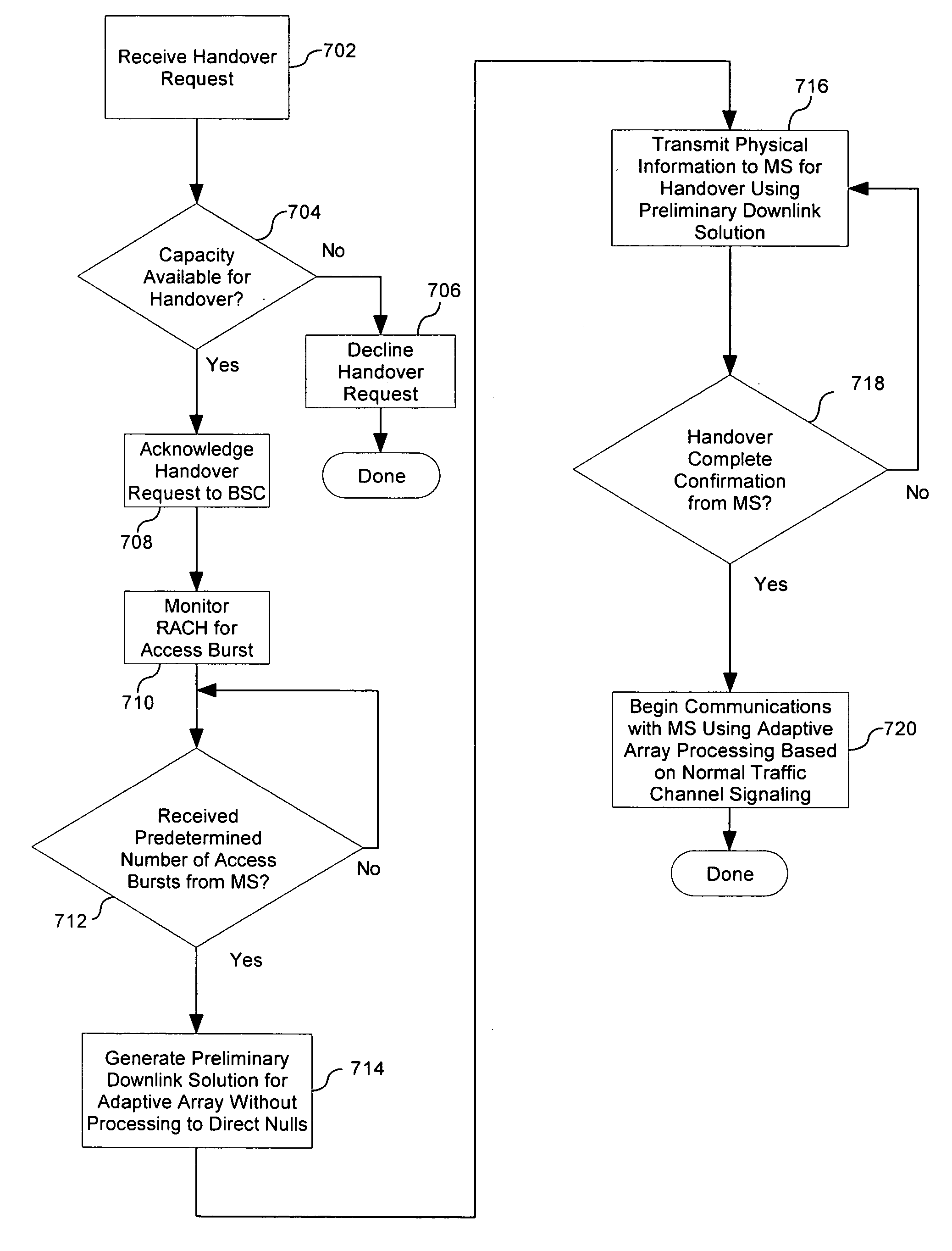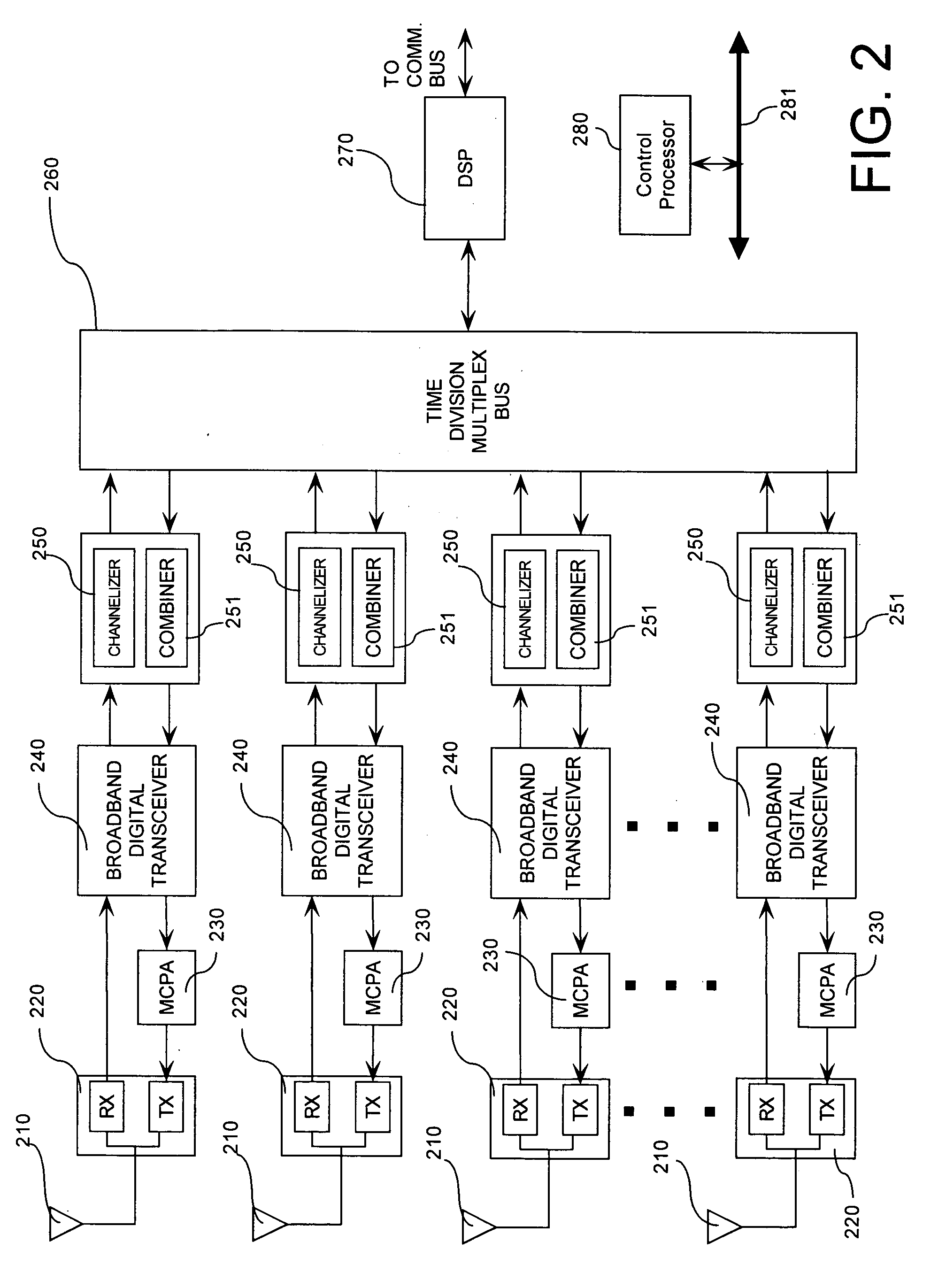Mobile station handover for base stations with adaptive antenna system
a mobile station and antenna system technology, applied in the field of cellular telephone systems, can solve the problems of co-channel interference, frequency reuse limits the overall capacity of a cellular network, interference between users of the same frequency channel, etc., and achieve the effects of reducing co-channel interference, increasing transmission rf power level, and reducing gain
- Summary
- Abstract
- Description
- Claims
- Application Information
AI Technical Summary
Benefits of technology
Problems solved by technology
Method used
Image
Examples
first embodiment
[0055] According to the invention, an adaptive array of a BTS can generate a temporary or preliminary downlink solution for responding to a mobile station based on an access burst from a mobile station. Notably, the transmission of the access burst by a mobile station on the RACH sub channel presents an early opportunity during the handoff process for the target BTS to assign weighting factors to an adaptive array based on a geo-location of the mobile station.
[0056] Still, there are several difficulties with the foregoing approach. For example, the access burst is typically used by the base station to determine timing advance when a mobile is initially accessing a new cell. In many instances, the base station will be able to determine timing advance based on only one access burst. Consequently, a conventional BTS can have only a single opportunity to determine the spatial characteristics of the mobile station before it responds. Further, the GSM access burst is of shorter duration a...
third embodiment
[0075] According to the invention, the target base station could transmit a wide area pattern on the initial transmit signal after handover. Once sufficient uplink signal has been received from the mobile and analyzed, the base station can revert to full adaptive processing for determining a transmit solution. This would require transmitting at higher power, which could cause additional interference for co-channel users for the brief period during wide area transmission. Also, more RF power is needed for the wide area transmission. Because of the energy focusing effect of the adaptive array system, less RF energy is usually required. For example, using a four element transmit array, 6 dB less energy is needed for focused downlink transmissions as compared to the situation where there is no focusing of RF energy. Accordingly, in the four element array example, 6 dB more energy would be required for transmitting the wide area pattern. However, many BTSs rely on a shared wideband multi...
PUM
 Login to View More
Login to View More Abstract
Description
Claims
Application Information
 Login to View More
Login to View More - R&D
- Intellectual Property
- Life Sciences
- Materials
- Tech Scout
- Unparalleled Data Quality
- Higher Quality Content
- 60% Fewer Hallucinations
Browse by: Latest US Patents, China's latest patents, Technical Efficacy Thesaurus, Application Domain, Technology Topic, Popular Technical Reports.
© 2025 PatSnap. All rights reserved.Legal|Privacy policy|Modern Slavery Act Transparency Statement|Sitemap|About US| Contact US: help@patsnap.com



